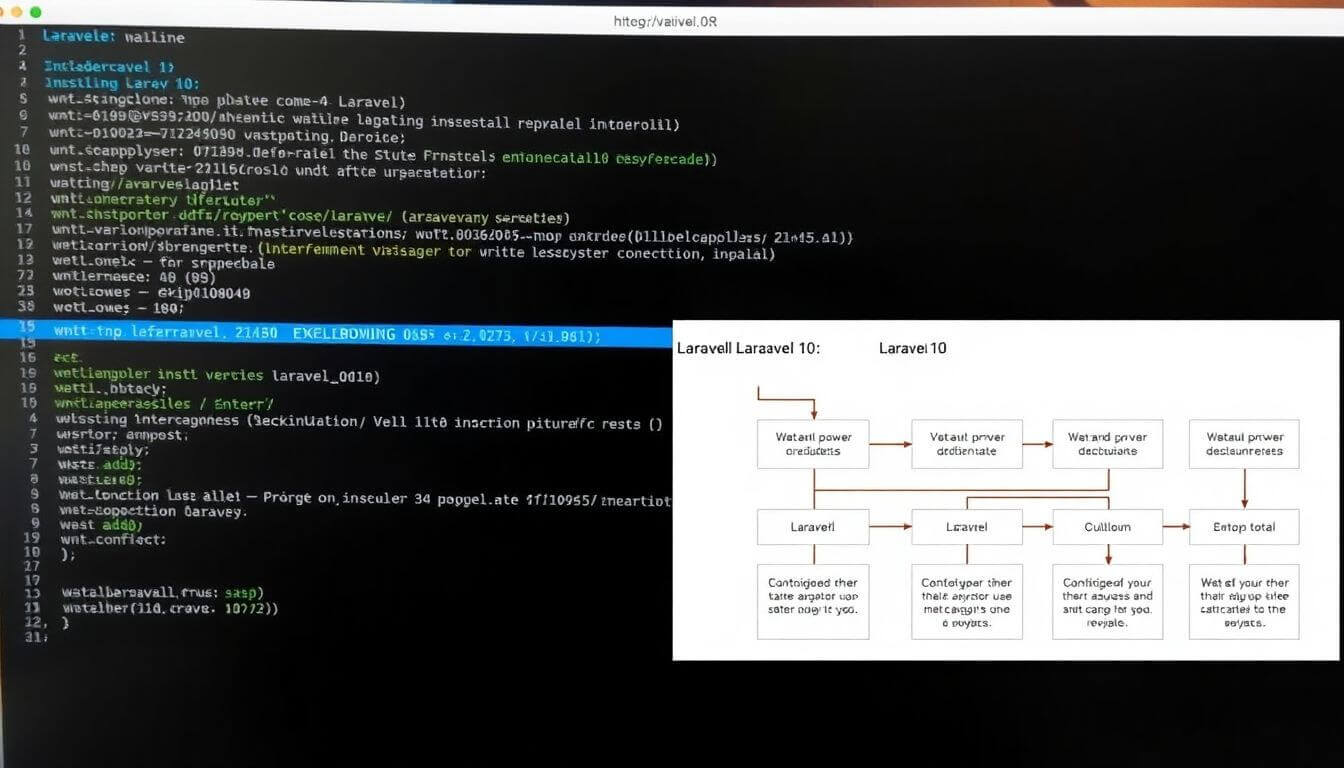Installing Laravel 10 From Scratch - The Complete Walkthrough

Table of Contents
- Introduction
- Why Choose Laravel for Your Web Application?
- Prerequisites: Setting Up Your Development Environment
- Step 1: Installing Composer
- Step 2: Setting Up Laravel 10
- Step 3: Configuring Your Environment
- Step 4: Exploring Laravel’s Directory Structure
- Step 5: Building Your First Laravel Application
- Enhancing Your Laravel Application with Best Practices
- Why Small Businesses Should Choose Prateeksha Web Design for Laravel Development
- Conclusion
Introduction
Are you ready to unlock the potential of Laravel 10? Laravel is one of the most popular PHP frameworks, known for its robust features and efficiency. In this guide, I’ll show you exactly how to install Laravel 10 from scratch, walking you through each step in detail. Whether you're a new developer or a small business considering web development for the first time, this guide has something valuable for you.
Why Choose Laravel for Your Web Application?
Laravel is celebrated for its MVC architecture, built-in authentication, easy-to-use routing, and powerful tools for building and scaling web applications. It continues to evolve, incorporating the latest PHP advancements and performance optimizations to support both developers and clients. Businesses using Laravel can build custom applications efficiently, with a lower Time-to-Market, making it perfect for small to medium-sized businesses.
Prerequisites: Setting Up Your Development Environment
Before you start, make sure you have the following tools installed:
- PHP (8.1+): Laravel 10 requires at least PHP 8.1.
- Composer: PHP’s dependency manager.
- Database (MySQL or SQLite): Laravel supports multiple databases.
- A Text Editor: Use something reliable like VS Code.
Ensuring a proper development environment will save you time and keep everything streamlined.
Step 1: Installing Composer
Composer is essential because it manages all the dependencies required for Laravel. To install Composer:
-
Open your terminal (Linux/macOS) or Command Prompt (Windows).
-
Run the following commands:
php -r "copy('https://getcomposer.org/installer', 'composer-setup.php');" php composer-setup.php php -r "unlink('composer-setup.php');" -
Move the Composer binary to your system path:
sudo mv composer.phar /usr/local/bin/composer
Now you can verify Composer’s installation by running:
composer --version
This command will display the Composer version, confirming it's successfully installed.
Step 2: Setting Up Laravel 10
Once Composer is installed, you’re ready to set up Laravel 10.
-
Navigate to the directory where you want to create your project.
-
Run the following Composer command:
composer create-project <a href="/blog/using-faker-in-laravel-to-generate-random-dates">laravel</a>/laravel my-laravel-app
Replace my-<a href="/blog/understanding-the-difference-pluck-vs-select-in-laravel">laravel</a>-app with your desired project name. This command downloads the Laravel 10 files and installs dependencies in your project folder.
Step 3: Configuring Your Environment
Laravel uses an .env file to manage environment variables. This file holds settings for the database, mail configurations, caching, and more.
-
In the root of your project, locate the
.env.examplefile. -
Create a copy of this file and name it
.env. -
Open the
.envfile and set up the following configuration variables:APP_NAME=MyLaravelApp APP_ENV=local APP_KEY=base64:<generate-key> APP_DEBUG=true APP_URL=http://localhost -
For your database configuration, update these settings in the
.envfile:DB_CONNECTION=mysql DB_HOST=127.0.0.1 DB_PORT=3306 DB_DATABASE=your_database_name DB_USERNAME=your_database_username DB_PASSWORD=your_database_password
Run php artisan key:generate to generate a new application key and ensure Laravel’s security.
Step 4: Exploring Laravel’s Directory Structure
Understanding Laravel’s directory structure is crucial:
- app/: This is where your core application logic resides.
- config/: All configuration files live here.
- database/: This directory manages migrations and seeders.
- public/: Your public assets, like images and CSS, are stored here.
- resources/: Views and frontend assets are managed here.
- routes/: This is where you define routes for your application.
- storage/: Logs and cached files are stored here.
Step 5: Building Your First Laravel Application
Let’s create a simple CRUD application with Laravel’s Artisan command-line tool. Run:
php artisan make:model Task -mcr
This command does three things:
- Creates a model for a Task.
- Generates a migration file for the
taskstable. - Sets up a basic controller for managing CRUD operations.
Enhancing Your Laravel Application with Best Practices
Laravel 10 supports advanced features that can improve performance, scalability, and security:
- Middleware: Use middleware to filter HTTP requests.
- Eloquent ORM: Utilize Laravel’s Eloquent ORM for powerful and expressive database operations.
- Cache Optimization: Implement caching with Redis for better performance.
- Testing with PHPUnit: Laravel includes PHPUnit support to streamline testing.
Why Small Businesses Should Choose Prateeksha Web Design for Laravel Development
At Prateeksha Web Design, our expertise spans multiple frameworks, including Laravel. We focus on scalability, performance, and security – essentials for any successful Laravel project. We work with small businesses to help them grow by delivering tailor-made solutions that are fast, user-friendly, and designed for growth.
Prateeksha Web Design is committed to providing a hassle-free experience in all stages of development, from concept to launch and ongoing support. Our team handles all technicalities, allowing business owners to focus on their core operations. Whether you’re looking to build a highly interactive web application or enhance your existing system, Prateeksha Web Design offers the skills and knowledge to deliver exceptional results.
Conclusion
By following this guide, you’ve successfully installed Laravel 10 from scratch and explored its robust features. Laravel 10’s modern tools and frameworks provide everything you need to develop a high-quality web application that aligns with current standards and business needs.
Laravel makes it easy to create powerful, scalable, and reliable applications. And if you're a small business owner looking to build a web application, consider reaching out to Prateeksha Web Design for expert support and guidance. Our team of experienced developers is ready to bring your vision to life.
About Prateeksha Web Design
Prateeksha Web Design offers comprehensive services for installing Laravel 10 from scratch, providing a complete walkthrough. They guide you through the process, from system requirements to configuration and final set-up. Their Laravel experts offer personalized assistance to resolve any issues, ensuring smooth installation. They also offer tutorials and resources for further understanding. Post-installation support is also provided to ensure optimal performance.
Interested in learning more? Contact us today.
